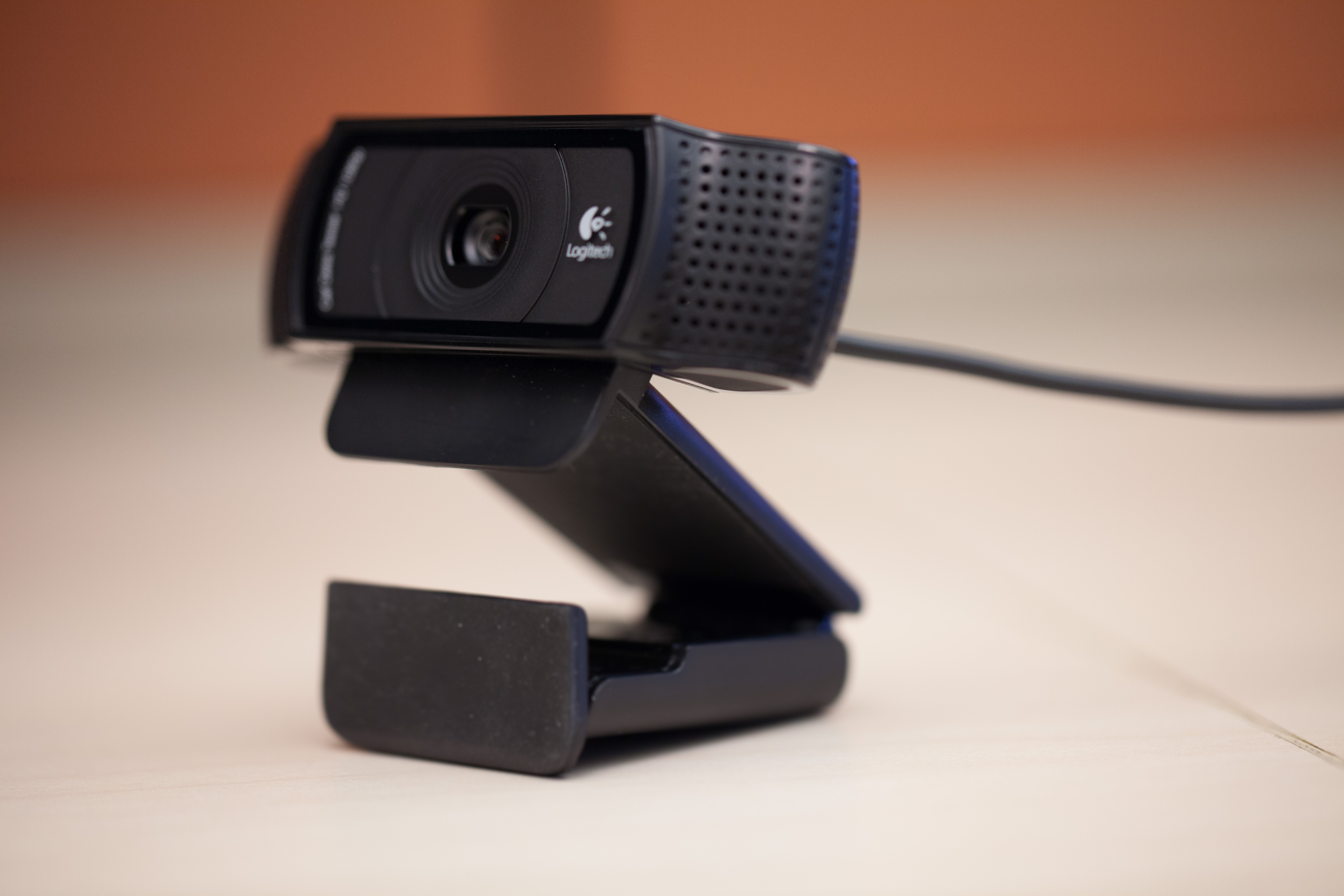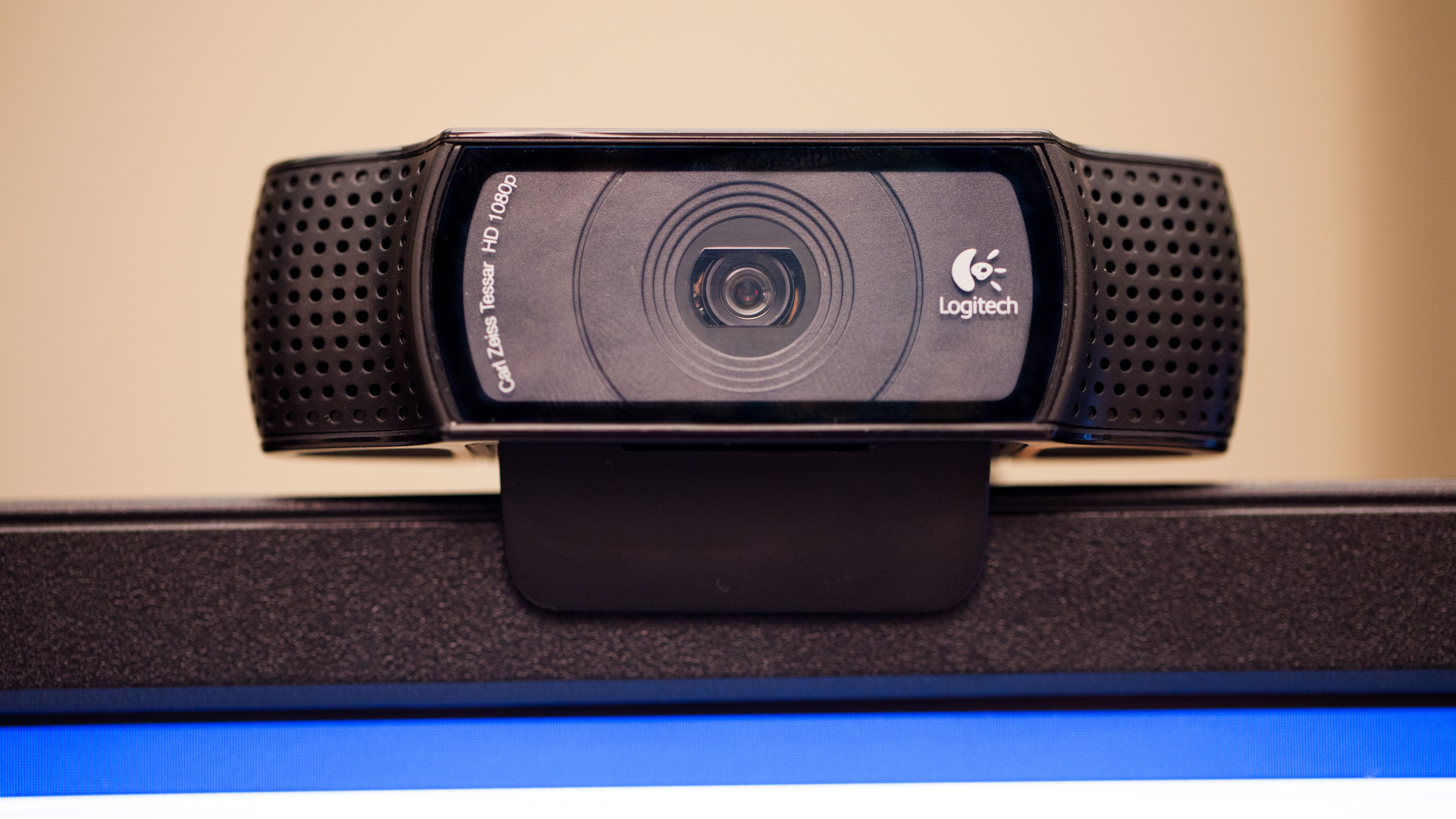Whether you’re an aspiring streamer, have a Skype interview coming up, or simply have friends abroad
you want to keep in touch with, you’ll probably need a webcam at some point. Unfortunately, when building a gaming PC, a webcam tends to be that component you only realize you’re missing after you need it. There are a lot of webcams out there, and it’s hard to judge a camera’s quality without plugging it in and using it firsthand. I tested nearly a dozen different webcams to find out which was the best. The best webcam Excellent picture quality in multiple lighting conditions Wide FOV is useful for groups, and can be digitally zoomed without a noticeable drop in quality Auto-focus and image adjustment are better than the competition Auto color can be a bit washed out, but is easily adjustable in software Logitech makes a lot of webcams.

Logitech makes a lot of webcams. They have the most options of any manufacturer, essentially selling a webcam at each $10 interval between $30 and $70 (£20 GBP to £48 GBP). Through all my testing, Logitech cameras were of a consistently higher quality than their competitors, but they were also more expensive. The c525 and c615, Logitech’s mid-tier options, added more features and ease of use instead of increased camera quality, but the next step up, the Logitech c920, was clearly on a different level.
All you have to do is look to see the difference in the c920’s picture quality. It has 1080p resolution with a large FOV, a sharp image, and a wide angle making everything about its picture look more camera than webcam. When I was testing it in low light, the auto image adjustments worked so well I had to double check the lights were actually turned off. It’s significantly cheaper than other webcams of its caliber. The Microsoft LifeCam Studio is only $10 cheaper but looks significantly worse, while the Logitech c930e has better, but comparable, video quality with a higher FOV and costs nearly $40 more.
c920 vs lifecam studio

Logitech c920: Microsoft LifeCam Studio: Both at max streaming resolution of 1080p with auto image adjustments on, image can be improved with manual adjustment. Click the arrows to enlarge.
One test I tried on every webcam was quickly moving my hand extremely close to the lens to see how its focus, white balance, and brightness reacted. When I did this to the c920, the results were amazing; instead of the blurry, pink blob I was used to seeing, I could make out the details of my fingerprints. Time and time again, the c920 impressed me not just for the quality of its image in ideal conditions, but its consistent quality in all settings. On two separate occasions, I streamed live sporting events from the middle of a field with nothing but the c920 plugged into my laptop and—from morning light to nighttime stadium lights with people sprinting through the frame—it didn’t miss one pass.
Logitech’s webcam software didn’t automatically install when I plugged any of their cameras in. That's a minor inconvenience, which Microsoft cameras avoid. Logitech's software is definitely worth downloading, though. The c920’s auto image adjustments are top-notch when adapting to different levels of light, but the white balance and saturation may take some fine-tuning. On its own, the c920 can leave an image a little washed out and lacking in color, which can easily be fixed from the webcam software. Indeed, if you aren’t expecting your location or lighting to change often, I would recommend fine-tuning the image settings for any webcam, as none of the auto-modes I used were entirely spot-on.

For a moment, I questioned whether or not the c920’s large frame size would actually be a problem for live streaming games. I looked small in the frame when sitting at my desk, and when I scaled down to the traditional “facecam” size in the corner of a stream, the wide-angle was a drawback rather than a feature. But, again, a solution came in Logitech’s webcam software, which made it easy for me to digitally zoom in and adjust the frame size without a noticeable drop in quality. Even the best webcams are limited to 1080p while streaming and 720p while Skyping, and claims of high resolution can be a red herring marketing tool—it doesn’t matter if your phone can take 12 megapixel pictures if the camera is garbage, you’re just taking really big, bad pictures—but the c920 has a high-quality camera.
It is Logitech’s most expensive consumer webcam, but the c920’s price never actually reaches its $100 MSRP, instead usually sitting in the price range of $60-$70. That’s still expensive for a webcam, but it’s worth it for the noticeable jump in quality compared to anything close to it.is simply the best webcam available. Anything cheaper will come with a distracting drop in quality, anything more expensive and you won’t notice enough of an improvement until you start shooting photos or video with a proper camera.
Read More The best budget webcam Very flexible camera head Easy plug-and-play usability Best quality for the price White balance will fluctuate annoyingly when auto image adjustment is on
The best budget webcam Very flexible camera head Easy plug-and-play usability Best quality for the price White balance will fluctuate annoyingly when auto image adjustment is on
The Logitech c920, and Logitech cameras in general, are really top-notch, but that quality comes at a premium that not everybody wants to pay. High fidelity cameras are expensive to make, and the generic $5 cameras that litter Amazon and Newegg are simply not worth it. So while the $25 Microsoft LifeCam HD-3000might not seem so budget, generally staying in the $25-30 (£20.06 GBP) price range, it is the best quality you can get at such a low price.
The HD-3000 is a plug-n-play camera in the truest meaning on the term. The stand is very adaptable and fit every monitor I put it on. The camera head has a large degree of flexibility, meaning I could just throw it on top of my monitor and adjust on the fly. This flexibility and ease of use was a trait of all the Microsoft webcams and is one of the key places they have bested Logitech. They were were also the only ones to download their webcam software automatically (on Windows, go figure), and that software is very robust.
Hd-3000 vs Live! Chat

Microsoft LifeCam HD-3000: Creative Live! Chat: Both at max streaming resolution of 720p. Click the arrows to enlarge.
Although the HD-3000’s auto image adjustments, a system which Microsoft calls TrueColor, did a good job adjusting to all the light levels I tried, the white balance would fluctuate somewhat distractingly. For example, when I was in front of a white wall, TrueColor would change the white balance as I moved my hand to cover more or less of the wall. This is good in theory, but it meant my face—the part I actually cared about being correctly color balanced—would change from red-ish to blue-ish with the wave of my hand. The HD-3000 can be made to look spot on, but I would recommend turning off TrueColor and setting the white balance and saturation manually.
The image quality isn't quite as nice as the Logitech c310, but the Microsoft LifeCam HD-3000is around $15 (roughly £10 GBP) cheaper for decent quality. The small increase in quality for the c310 doesn’t justify its price jump.
Read More The most versatile webcam Huge range of motion lets you angle the c525 in almost any direction Logitech's webcam software means great auto image adjustments Base folds up to protect the lens for travel Other webcams offer better image quality, but not the same flexibility
The most versatile webcam Huge range of motion lets you angle the c525 in almost any direction Logitech's webcam software means great auto image adjustments Base folds up to protect the lens for travel Other webcams offer better image quality, but not the same flexibility
The $40 Logitech c525(£35 GBP is the cheapest we've seen) is not the best quality webcam Logitech has to offer, but it has a lot of features that others don’t. Comparing only video quality, the c310 is probably better and costs nearly the same price, but the c310’s angle can only be adjusted vertically and it doesn’t attach to some monitors very well. The c525 has a huge range of motion, a much more adaptable base, and can fold flat to protect the lens during transport. The c525 feels like a webcam for laptops, meant to replace or upgrade the one built into the screen, but its versatility makes it a great webcam for unconventional setups or people moving it between multiple rigs.
The unique design and shape of the c525 is something you won’t see anywhere else. The first time I unfolded it reminded me of the Transformers toys I played with as a kid, except this wasn’t horribly frustrating to get back together. The only other webcam with a similar design is another Logitech, the c615. The c615 is nicer overall but it’s around $20-25 more expensive, getting close to the price of the c920 without reaching that level of quality. The c525 strikes a great balance: you're paying for its unique features while still getting a nice camera, putting it in a rare niche of the webcam market. It fills a need that the c615 overshoots because of its steep price.
If you plan to travel or change streaming locations a lot,is the perfect compromise of features. It usually costs around $30-40 and doesn’t have the greatest quality for that price, but it can adapt to almost any setting. The c525 is also backed up by Logitech’s superior auto image adjustments, meaning changes in light levels are easier to handle. If you want pure value for image quality, the c525 isn’t the right choice, but it provides versatility you can’t find in other webcams.
Read MoreHow we test webcams and others we testedWebcams have become a part of gaming culture. With the rise of YouTube Let’s Plays and Twitch livestreams, seeing who is playing a game has become nearly as important as seeing the game itself. Not everyone cares about seeing a facecam in the corner of their favorite stream, but it’s no coincidence that pretty much every top-rated streamer has a webcam prominently featured.
Whether you’re an aspiring streamer, have a Skype interview coming up, or simply have friends abroad you want to keep in touch with, you’ll probably need a webcam at some point. Unfortunately, when building a gaming PC, a webcam tends to be that component you only realize you’re missing after you need it. When I switched back to a desktop PC after using a gaming laptop for four years I had a truly embarrassing moment as I realized, “Oh right, those don’t just come built into the monitor.”
First and foremost, a camera should be judged by the quality of its picture. If a webcam's price seems too good to be true, it probably doesn't look very good. Super cheap webcams can have the visual fidelity of filming yourself with a potato, but spend too much money and you’ll hit a plateau where you can’t see a practical difference besides the cost. As a PC peripheral that will be used infrequently by most of us—when compared to something like a mouse or keyboard—or scaled to the corner of a streamer’s screen, I wanted to find the perfect balance of price and image quality.
Out of every camera I tried, the Logitech c920 was the overall best. It has the best image quality available without approaching the $100 price point of the webcams it can be compared to. Logitech has the widest webcam selection by far and, for the most part, their cameras were consistently the best ones I tried. You have to pay a bit more than other brands, but it's usually worth it.
The Logitech c920 is my primary recommendation, but I also picked out the best budget webcam (one that doesn't look like crap, and costs only $25) and the most versatile webcam for travel or unusual desk setups.

I tested the webcams in the practical situations that they would be used. Making a call on Skype will be the most common use of a webcam for non-streamers, but Skype limits your camera’s resolution to 720p, leveling the playing field for those limited to 720p by default.
I used OBS to both livestream and record video from each camera, testing them both fullscreen and scaled down to a “facecam” size. I also used each manufacturer’s webcam software to take the highest possible resolution pictures with each and manually adjust settings like white balance, brightness, auto-focus, and others where applicable. Each of these situations were tested with multiple lighting setups from overhead fluorescent bulbs to nothing but the glow of the monitor in front of me.
Aside from the video quality, I also took a look at their ease of use. Each manufacturer has a different method of attaching a webcam to the monitor, so I tested them across different monitor shapes and sizes. I took into account whether the webcam cord was long enough to reach from the top of a monitor to a case underneath a desk. I tested how easy they were to angle, readjust, and if they would fall off or reposition themselves if I bumped the desk. I tested the plug-n-play nature of them and noted whether the webcams downloaded drivers or software automatically. Lastly, I recorded audio with their built-in microphones, but this was not a heavily influencing factor as a webcam should be bought with video in mind first.
CompetitorsWe tried out a whole bunch of webcams during the testing process for this article.was crowned the victor, but here are some of the others we tried and why they didn’t quite hit the mark.
Logitech c310:The c310 is a very nice quality camera and is on the lower-end of Logitech’s prices, but that also makes it a good example of the premium you pay for a logitech webcam. The c310 has a crisp image, but any other advantages it has over the Microsoft LifeCam HD-3000 are negligible compared to the price increase.
Logitech c615:As I mentioned in my discussion of the c525, the c615 has a versatile design and a nice quality image, but it’s also a steep price increase from the c525. For $10 more you can get the c920, which blows this out of the water even without the foldable design.
Logitech c930e:This is a better quality camera than the c920, but it costs nearly $40 more and is designed with business conferencing in mind. That means the Logitech webcam software won’t work, adjusting the image can be very difficult, and the FOV is far wider than an individual person would want. It’s a fantastic webcam, but really not intended for the average consumer.
Creative Live! Sync:Creative makes cheap webcams that seem appealing enough, but I can not recommend that anyone buys them. The Live! Sync manages to make $18 look expensive with its very poor picture quality, unadjustable camera head, and no webcam software.
Creative Live! Chat:Once again, Creative’s Live! Chat is not worth its price. It is definitely better than the Sync, with an adjustable camera head and a higher quality picture, but the Microsoft LifeCam HD-3000 is only about $5 more expensive. There are simply better options for a similar cost.
Creative Senz3D:I don’t think the Senz3D is really meant to be a webcam. It’s extremely expensive yet has a max resolution of 720p and quality comparable to the Logitech c310. It has 3D sensing and motion controls which didn’t work too badly, but I was hard pressed to find games for it besides the ones that came with it. I think this is Creative’s attempt at making a cheaper, PC-centric Kinect which is a noble goal, but until more people take advantage of the included SDK, the Senz3D won’t have much use.
Microsoft LifeCam Cinema:The Microsoft cameras are significantly easier to use in both their software and their adjustability, but the picture quality isn't up to Logitech's bar. The LifeCam Cinema’s design is unique and flexible, but its cost is high considering Logitech’s higher quality.
Microsoft LifeCam Studio:Similar to the LifeCam Cinema, the LifeCam Studio is a great camera with fantastic adjustability, but it’s only $10 away from the significantly better Logitech c920. The Studio is a fine looking 1080p webcam, but only $10 more will get you a huge step up.

I still need to test the Logitech c270, their webcam that is slightly cheaper than the c310. However, it’s still more expensive than the Microsoft LifeCam HD-3000, which I recommend over the c310 as a budget option. In general, I am interested to see a true competitor to Logitech enter the webcam market, as currently only Microsoft can hold a candle to its quality. I also want to test the Brother NW1000, another high-end webcam which could rival the c920, even if it does cost more.
Lastly, I want to buy as many different low-end, $5 webcams as I can possibly find and see if even one of them is slightly worth it. But if the webcams I've tested are any indication, you get what you pay for, and you're not going to want to stream games, or even use Skype, with a webcam that costs less than $20.
We’ll keep this list up to date as new webcams are released and prices shift. Price for quality had a big influence on my judgment, so if prices permanently dip or raise, it could affect the how highly I rate a specific webcam. As for the Logitech c920, unless it goes back to costing $100, it will take a new webcam entering the market to dethrone it.
A note on affiliates: some of our stories, like this one, include affiliate links to stores like Amazon. These online stores share a small amount of revenue with us if you buy something through one of these links, which helps support our work evaluating PC components.
Topics
We recommend By Zergnet
Post a Comment